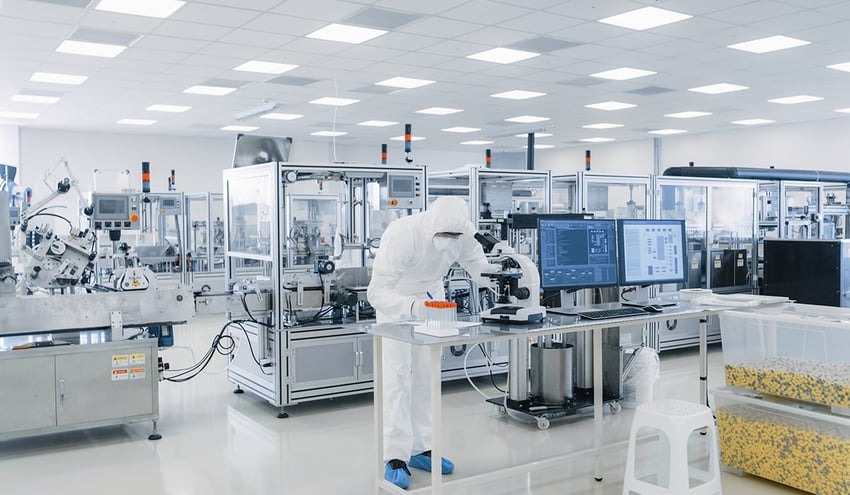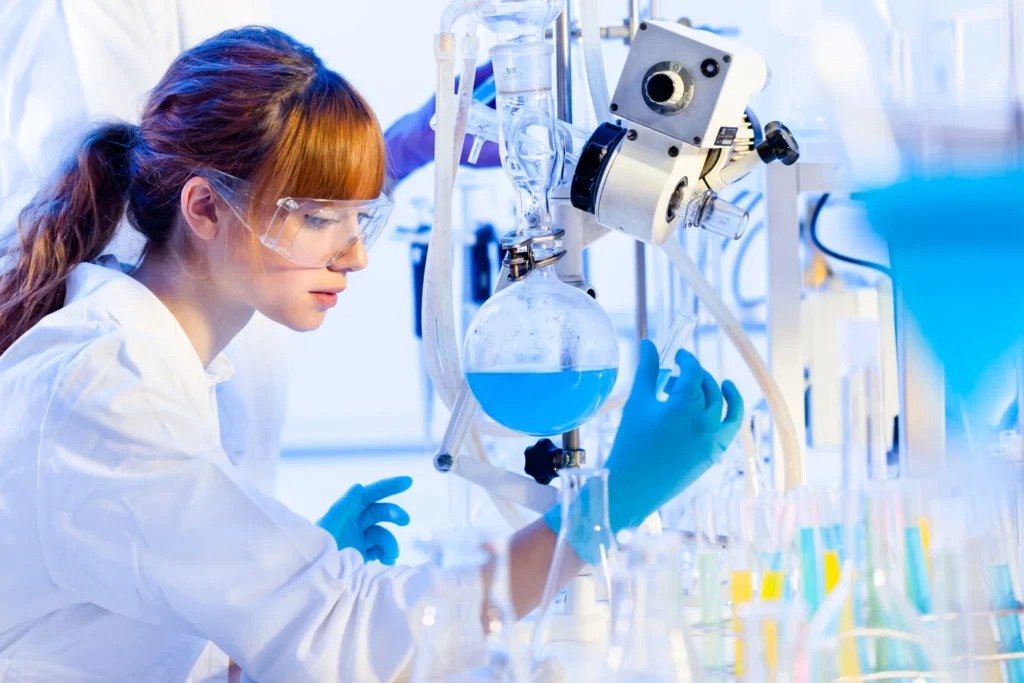The Ultimate Guide for Professionals, Researchers, and Entrepreneurs
Introduction
A monocular diagnostic lab is a specialized facility equipped with advanced monocular microscopes and diagnostic tools, playing a pivotal role in medical, research, industrial, and educational sectors. For professionals, researchers, and business owners, establishing such a lab is a strategic investment that demands careful planning, regulatory compliance, and a deep understanding of both technology and market needs. This comprehensive guide covers every aspect of setting up a monocular diagnostic lab, ensuring you are well-prepared to create a facility that is efficient, compliant, and future-ready. Throughout this post, SEO-friendly keywords such as monocular diagnostic lab setup, monocular microscope equipment, diagnostic laboratory business plan, and laboratory accreditation are integrated for optimal search visibility.
What is a Monocular Diagnostic Lab?
A monocular diagnostic lab is a laboratory where biological samples—such as blood, tissue, urine, and other body fluids—are analyzed using monocular microscopes and related diagnostic equipment. These labs are essential in hospitals, diagnostic centers, research institutes, pharmaceutical companies, schools, and industrial quality control settings. The monocular microscope, characterized by a single eyepiece, is particularly valued for its simplicity, affordability, and effectiveness in routine diagnostics, educational training, and certain research applications.
Key Functions of a Monocular Diagnostic Laboratory
- Disease Diagnosis: Detecting and confirming diseases through microscopic and biochemical analysis.
- Research: Investigating disease mechanisms, cellular structures, and drug development.
- Industrial Quality Control: Testing food, pharmaceuticals, and chemicals for safety and compliance.
- Education: Training students and professionals in microscopy and laboratory techniques.
Planning Your Monocular Diagnostic Lab
1. Define Your Lab’s Purpose
- Medical Diagnostics: Focus on patient testing and clinical services.
- Research: Emphasize experimental protocols and advanced instrumentation.
- Industrial/Quality Control: Prioritize high-throughput screening and regulatory compliance.
- Educational: Support practical training and curriculum requirements.
2. Market Analysis and Business Plan
- Target Market: Identify your primary clients—hospitals, clinics, research organizations, educational institutions, or industry partners.
- Competitive Analysis: Assess local and regional competitors, their services, and pricing.
- Regulatory Landscape: Understand licensing, accreditation, and compliance requirements (e.g., NABL, CAP, CLIA).
- Financial Projections: Estimate startup costs, operational expenses, and revenue streams567.
3. Facility and Infrastructure
- Location: Choose a site with easy access for clients and sample logistics.
- Space Planning: Allocate areas for sample reception, processing, analytical work, storage, and waste disposal.
- Utilities: Ensure reliable water supply, drainage, electricity (with backup), and ventilation.
- Sanitation: Use materials for walls, ceilings, and floors that are easy to clean and resistant to biohazards.
- Security: Restrict access to authorized personnel only.
Essential Equipment and Instruments
A well-equipped monocular diagnostic lab should have the following core instruments:
| Equipment | Purpose/Function |
|---|---|
| Monocular Microscope | Visualizes cells, tissues, and microorganisms |
| Centrifuge | Separates components based on density |
| Autoclave | Sterilizes equipment and media |
| Incubator | Maintains optimal temperature for cultures/reactions |
| Spectrophotometer | Quantifies biomolecules by measuring light absorption |
| pH Meter | Measures acidity/alkalinity of solutions |
| Analytical Balance | Precise weighing of samples and reagents |
| Micro Pipettes | Accurate liquid handling |
| Refrigerators/Freezers | Stores reagents and biological samples |
| Water Bath | Maintains constant temperature for reactions |
| Vortex Mixer | Mixes solutions quickly and efficiently |
| Biosafety Cabinet | Protects samples and personnel from contamination |
| Glassware & Consumables | Beakers, flasks, pipettes, slides, Petri dishes |
| Computer & Printer | Data management and reporting |
This list covers the primary requirements and should be tailored to your lab’s specific focus (clinical, research, industrial, or educational.
Monocular Microscope: The Lab’s Workhorse
Features and Advantages
- Single Eyepiece Design: Simplifies use and reduces cost, making it ideal for routine diagnostics and educational settings.
- Ease of Use: User-friendly for both beginners and experienced professionals.
- Durability: Robust construction suitable for frequent handling.
- Versatility: Suitable for a wide range of biological and material samples.
Common Applications
- Hematology: Blood smear analysis for anemia, infections, and blood disorders.
- Microbiology: Identification of bacteria, fungi, and parasites.
- Histopathology: Examination of tissue biopsies for disease diagnosis.
- Education: Training students in microscopy and laboratory techniques.
Laboratory Design and Workflow
Layout Considerations
- Reception and Waiting Area: For patient registration and sample drop-off.
- Sample Collection Room: Dedicated space for drawing blood and collecting other specimens.
- Pre-Analytical Section: Centrifugation, aliquoting, and sample preparation.
- Analytical Section: Houses major instruments and testing stations.
- Post-Analytical Section: Data analysis, result validation, and reporting.
- Storage: For samples, reagents, and hazardous materials.
- Waste Management: Dedicated area for safe disposal of biohazardous and chemical waste.
Workflow Optimization
- Unidirectional Flow: Ensure samples move in one direction to minimize cross-contamination.
- Zoning: Separate clean and contaminated areas.
- Automation: Implement Laboratory Information Management Systems (LIMS) for tracking and reporting.
Staffing and Training
Key Personnel
- Lab Director/Manager: Oversees operations, compliance, and quality assurance.
- Pathologists/Microbiologists: Interpret test results and supervise laboratory processes.
- Medical Laboratory Technologists: Perform routine and specialized analyses.
- Technical Assistants: Support sample processing and equipment maintenance.
- Administrative Staff: Handle billing, logistics, and customer service.
Training and Competency
- Initial Training: On SOPs, equipment use, and safety protocols.
- Ongoing Education: Updates on new technologies, quality standards, and regulatory changes.
- Competency Assessment: Regular evaluation to ensure proficiency and compliance.
Safety and Quality Assurance
Safety Measures
- Personal Protective Equipment (PPE): Lab coats, gloves, eye protection, and masks.
- Biosafety Cabinets: For handling infectious materials.
- Chemical Safety: Proper storage, labeling, and handling of reagents.
- Fire Safety: Extinguishers, alarms, and emergency exits.
- Waste Disposal: Segregation and safe disposal of biological and chemical waste.
- Biosafety Program: Written safety rules, regular training, and compliance audits.
Quality Control
- Internal QC: Regular calibration of instruments, use of control samples.
- External QC: Participation in proficiency testing programs.
- Documentation: Maintain detailed records of procedures, results, and incidents.
- Accreditation: Seek certification from recognized bodies (e.g., NABL, CAP, ISO).
Common Monocular Diagnostic Lab Tests
| Test Profile | Analytes/Targets | Clinical Relevance |
|---|---|---|
| Hematology | CBC, ESR, Hemoglobin, Platelet count | Anemia, infections, clotting disorders |
| Microbiology | Bacterial, viral, fungal cultures | Infectious disease diagnosis |
| Histopathology | Tissue biopsy analysis | Cancer, inflammatory diseases |
| Cytopathology | Pap smear, FNAC | Cancer screening, cytological diagnosis |
| Biochemistry | Glucose, Lipids, Liver/Kidney function tests | Diabetes, organ health, metabolic status |
| Immunology | ANA, RF, CRP, Immunoglobulins | Autoimmune diseases, allergies |
These tests form the backbone of clinical diagnosis and patient management.
Regulatory Compliance and Accreditation
- Licensing: Obtain necessary licenses from local and national authorities (e.g., State Government License in India, NABL, CLIA).
- Accreditation: Demonstrates adherence to international quality standards.
- Documentation: Maintain SOPs, equipment logs, and personnel records.
- Audit Readiness: Regular internal and external audits to ensure compliance.
Budgeting and Financial Planning
Startup Costs
- Infrastructure: Renovation, utilities, and security.
- Equipment: Purchase, installation, and calibration.
- Consumables: Reagents, glassware, PPE, and disposables.
- Staffing: Salaries, training, and benefits.
- Licensing and Accreditation: Application fees and inspection costs.
Operational Expenses
- Reagent and Consumable Replenishment
- Equipment Maintenance and Service Contracts
- Utilities (Electricity, Water, Internet)
- Waste Disposal Services
- Insurance (Liability, Fire, Theft)
Revenue Streams
- Diagnostic Testing Services
- Research Contracts and Grants
- Training and Educational Programs
- Consulting and Quality Assurance Services
Develop a detailed business plan with financial projections to attract investors and manage growth.
Marketing and Growth Strategies
- Digital Marketing: optimized website, social media, and online advertising.
- Partnerships: Collaborate with hospitals, clinics, and research organizations.
- Quality Differentiation: Emphasize accreditation, turnaround time, and advanced technology.
- Customer Service: Reliable reporting, transparent billing, and responsive support.
- Continuous Improvement: Invest in staff training, equipment upgrades, and new test offerings.
Trends and Innovations in Monocular Diagnostics
- Automation and Robotics: Increase throughput, reduce errors, and improve reproducibility.
- Point-of-Care Testing: Decentralized testing for rapid results.
- Digital Microscopy: Integration of cameras and image analysis software.
- Artificial Intelligence: Data analysis, pattern recognition, and predictive diagnostics.
- Sustainable Practices: Green chemistry, energy-efficient equipment, and waste reduction.
Checklist for Setting Up a Monocular Diagnostic Lab
- Define lab purpose and scope
- Conduct market and competitor analysis
- Prepare a detailed business plan
- Secure funding and location
- Design lab layout and workflow
- Procure essential equipment and consumables
- Recruit and train qualified staff
- Implement safety and quality protocols
- Obtain necessary licenses and accreditations
- Launch marketing and outreach initiatives
Conclusion
Establishing a monocular diagnostic laboratory is a rewarding endeavor that blends science, business, and regulatory compliance. By following best practices in planning, infrastructure, equipment selection, staffing, safety, and quality assurance, you can build a lab that meets the needs of healthcare, research, industry, or education. Stay updated with technological advancements and regulatory changes to ensure your lab remains competitive and compliant.
Keywords Used
- monocular diagnostic lab
- monocular microscope equipment
- diagnostic laboratory business plan
- laboratory accreditation
- laboratory safety protocols
- diagnostic tests
- laboratory workflow
- laboratory quality control
- clinical diagnostics
- research laboratory
- laboratory automation
- laboratory compliance
- laboratory marketing strategies



